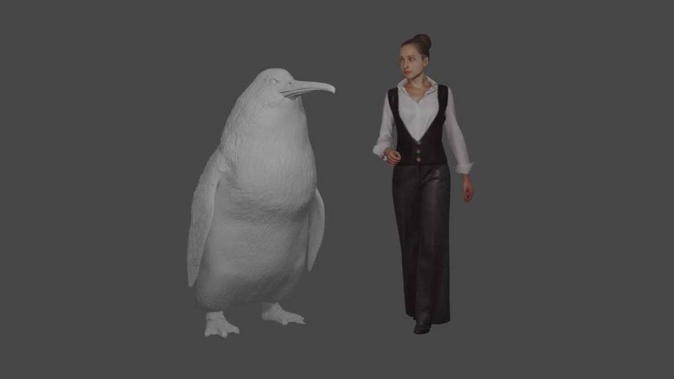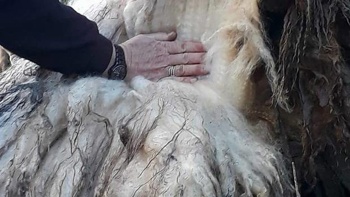
Move over, mega parrot: scientists have just revealed that a giant species of penguin – about 1.6m tall – once lived in New Zealand.
The discovery of Crossvallia waiparensis, a monster penguin from the Paleocene Epoch, between 66 and 56 million years ago, has been identified from fossils found in Waipara, North Canterbury.
It added to the list of gigantic, but extinct, New Zealand fauna. These include the world's largest parrot, a giant eagle, giant burrowing bat, the moa and other giant penguins.
The species was one of the world's oldest known penguin species and also one of the largest – taller even than today's 1.2m emperor penguin – and weighing up to 70 to 80 kg.
Amateur palaeontologist Leigh Love found the bones at the Waipara Greensand fossil site in North Canterbury last year.
Local fossil preparator Al Mannering readied them for study and helped describe them.
A team comprising Canterbury Museum curators Dr Paul Scofield and Dr Vanesa De Pietri, and Dr Gerald Mayr of Senckenberg Natural History Museum in Frankfurt, Germany, analysed the bones and concluded they belonged to a previously unknown penguin species.
In a paper published this week, they concluded that the closest known relative of the species was a fellow Paleocene species Crossvallia unienwillia, which was identified from a fossilised partial skeleton found in the Cross Valley in Antarctica in 2000.
Scofield said finding closely related birds in New Zealand and Antarctica shows our close connection to the icy continent.
"When the Crossvallia species were alive, New Zealand and Antarctica were very different from today – Antarctica was covered in forest and both had much warmer climates," he said.
The leg bones of both Crossvallia penguins suggested their feet played a greater role in swimming than those of modern penguins, or that they hadn't yet adapted to standing upright like modern penguins.
It was the fifth ancient penguin species described from fossils uncovered at the Waipara Greensand site.
Mayr said the Waipara Greensand was arguably the world's most significant site for penguin fossils from the Paleocene Epoch.
"The fossils discovered there have made our understanding of penguin evolution a whole lot clearer," he said.
/arc-anglerfish-syd-prod-nzme.s3.amazonaws.com/public/EUOP4RI73RBJRIC6ETRFDC7JXQ.jpg)
"There's more to come, too – more fossils which we think represent new species are still awaiting description."
De Pietri said discovering a second giant penguin from the Paleocene Epoch was further evidence that early penguins were huge.
"It further reinforces our theory that penguins attained a giant size very early in their evolution," she said.
The fossils of several giant species, including C. waiparensis, would be displayed in a new exhibition about prehistoric New Zealand at Canterbury Museum later this year.
The revelation came just days after scientists reported finding the remains of a super-sized giant parrot that stalked New Zealand 20 million years ago - and was half the height of a human.
Analysis of leg bones believed to be 20 million years old have led to the identification of what is believed to be the biggest parrot species- which has been suitably dubbed "Hercules".
And in 2014, scientists described another giant ancient penguin far taller than any species alive today, after its fossil remains sat for decades inside an Auckland storage shed.
The fossilised bones of the penguin were found in North Waikato in 1971, but had been largely ignored until rediscovered by zoologist Dr Daniel Thomas.
The unusual features of the 28-million-year-old specimen had convinced Thomas it is a new species, and the first of its kind to be discovered in the North Island.
Thomas estimated the bird would have stood at 1.3m - slightly taller than the ancient Kairuku penguin discovered in 2012, about 30cm taller than today's largest penguin, the emperor, but still smaller than the whopper bird revealed today.
Take your Radio, Podcasts and Music with you









